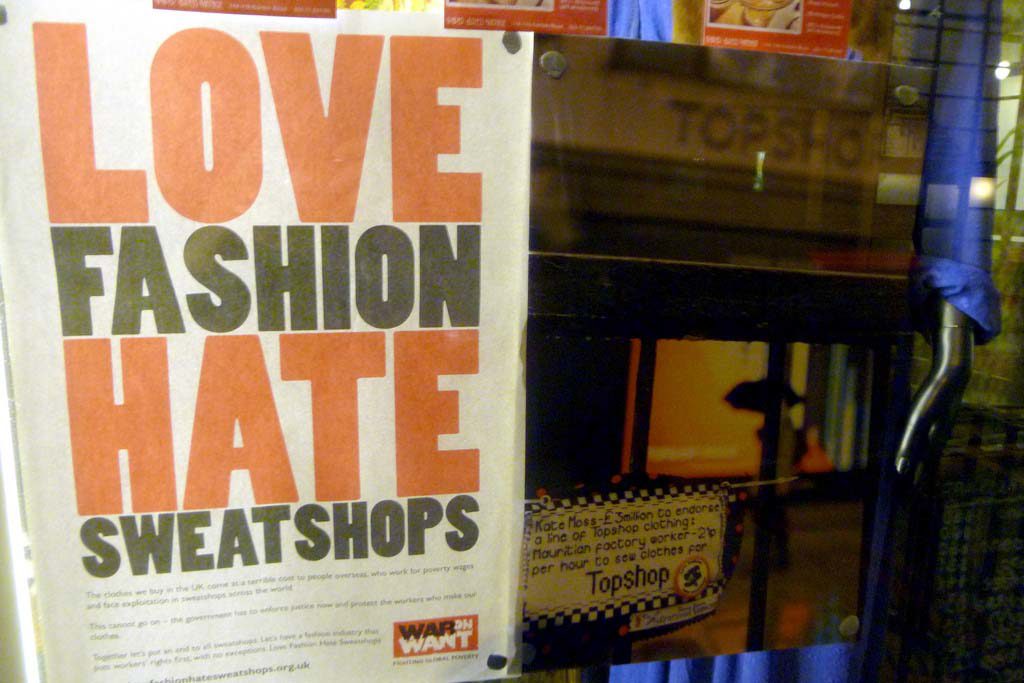Sweatshops: Where Greed Meets Need

As a conscious consumer, we strive to better understand where our products come from.

Conscious Consumer Sweatshop Factsheet
Upon reading this disheartening data, it’s impossible not to ask: why? Why do people choose to work in sweatshops? Why do these people stay?
The easy answer seems to be “to make a living”. Admittedly, making very little money is better than making no money at all. But why, of all places, would one choose the garment industry?
The fact is, the options are limited, even when looking outside the garment industry. In Bangladesh, it is the most popular line of work, followed by agriculture and shipbuilding. With those in mind, it is easy to see why working at a textile factory might be preferable: agriculture is challenging labor with often inconsistent rewards; shipbuilding is physically dangerous. In China, the situation isn’t much better: despite its booming manufacturing sector, factory workers outside the garment industry are just as bad off, often working sixteen hour days for as little as 55 cents an hour.
With these discouraging alternatives, garment work seems like the wiser choice: in a way, it provides independence, empowerment and opportunity. It’s perhaps a harsh truth to acknowledge, but sweatshops, even with their horrible wages and awful conditions, are actually able to help millions of people.
It’s not a black-and-white issue, as Leslie Chang points out in her 2008 book Factory Girls. She spent time in Dongguan, a booming industrial town in China’s Pearl River Delta. By following the lives of two girls, Min and Chunming, Chang unveiled a much more complex system that drives masses of young Chinese workers out of their farming villages. She tells the story of Chunming’s constant job switching and relentless quest for self-improvement, which she would have never been able to do in her hometown. Most of these workers are looking for stability, something that in their rural towns would only be possible with an early marriage to some equally poor individual from a nearby village.
In factories, even the smallest wages can be used for self-investment in education, as workers take night-lessons to learn English, or enroll in secretarial courses to move up the ladder. These additional qualifications make it simpler for them to change jobs as often as they need to, in search of something better. This is the most accessible means of mobility for rural villagers. Their hopes and dreams hinge on these achievements, which cannot be found in simple farming villages.
In Bangladesh, the situation is very much the same. Historically, sweatshop conditions have been well-documented and often lead to tragedy, such as the Rana Plaza collapse in 2013. If that notoriety for unsafe practices wasn’t enough, the country also had the worst wages for the textile industry in the world as of 2015. However, the industry accounts for roughly 20% of the country’s GDP— without it, the Bangladeshi economy would collapse.

Garment factory
It also employs around 4 million people, the vast majority women. Many of them earn a great deal of financial independence, and are even help their families. To them, sweatshops are their way out of poverty. Additionally, they serve to free them from strictures imposed by a conservative Muslim moral code. They also lead to later marriages and thus, fewer children, which helps curb the population’s uncontrolled growth. Furthermore, sweatshops have an unexpected benefit: they prevent underage marriage, a rampant practice in Bangladesh that stems out of extreme desperation due to poverty, despite being illegal.
In short, the problems surrounding sweatshops are much more complex than we might think. It’s not as easy as saying “sweatshops are bad”; there are many other factors that play into the issue. To many, sweatshops are simply the best option they have. They are also more than a source of income; they are empowering, personally and financially, providing people with opportunities they would never have had otherwise.
Of course, none of these benefits excuse the demoralizing, inhumane treatment and ridiculous wages garment workers are often subjected to. These conditions are a direct result of greed, corruption, and profit. The search for cheap labor is only one part of the story: even when there are laws in place, their enforcement is negligible. Fierce competition means manufacturers are often unwilling to spend the smallest amounts on safety precautions, and buyers looking for the cheapest alternatives feed into that vicious cycle. Greed trickles down from big corporations all the way to factory owners, permeating the entire system from top to bottom. The well-being of their workers doesn’t matter; they are blinded by greed, cutting corners wherever possible in their hunger for the highest profit margin. In their selfishness, there is no room for investment in livable, sustainable wages or humane working conditions.

Bangladeshi women sewing clothes
Boycotting brands that use sweatshop labor might be the immediate reaction, but the problem is not that simple. Boycotting those brands effectively creates a labor vacuum, driving all of those who previously worked in factories to other, potentially more dangerous jobs, where they can be exploited just as badly, or worse. Mindful consumption choices may push corporations to change their operations. Advocating for better labor conditions and wages may eventually make them happen. But complex problems will not be resolved with simple solutions.
Consumers must be informed about the production process, and use their buying power to influence big corporations to change them and shift to more sustainable structures. We need holistic, multifaceted solutions to approach a system that is fragmented, corrupt, and ultimately broken.
In the next article in this series, we will explore how conscious consumption choices have the power to reshape the system by favoring a more sustainable, humane manufacturing framework.

Leave a comment